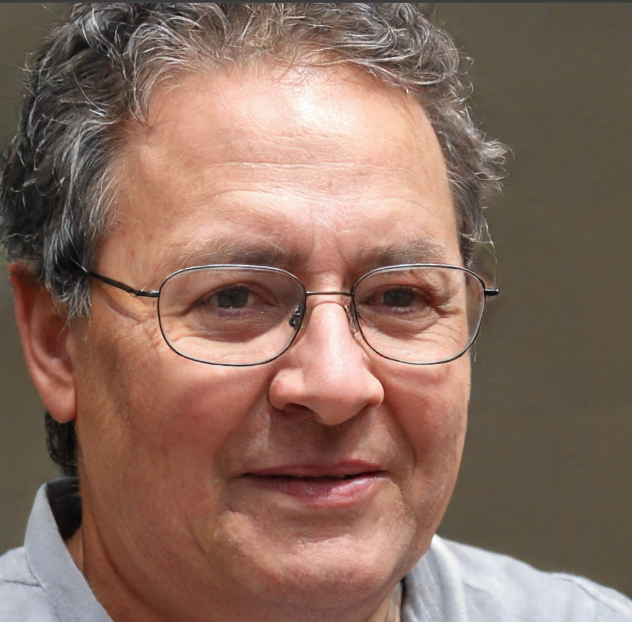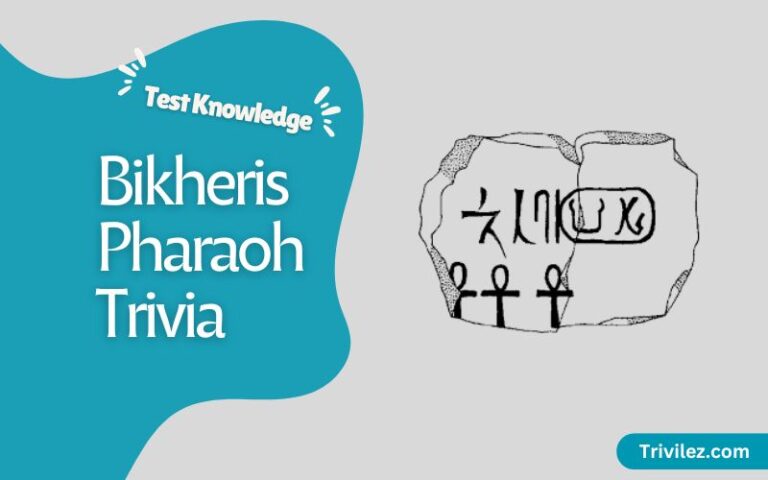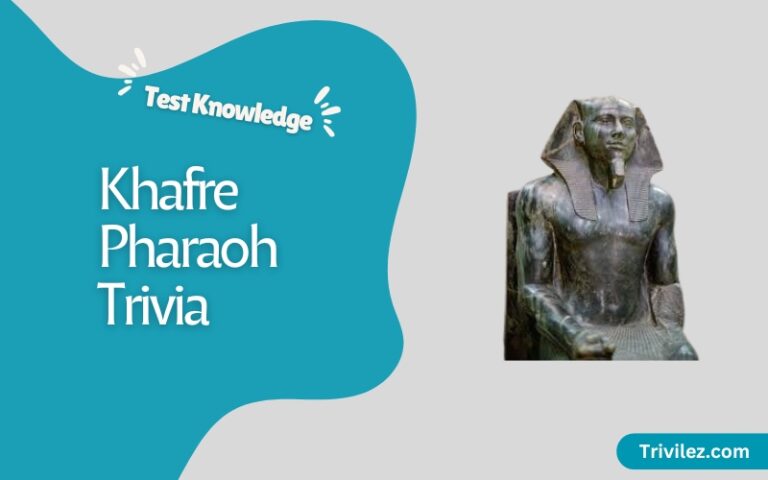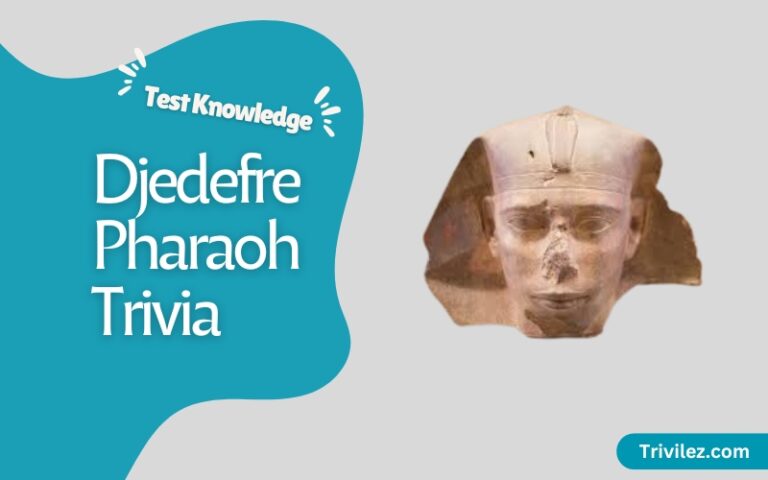Say Hi | contact@trivilez.com
30 Seth-Peribsen Pharaoh Trivia Questions and Answers

Seth-Peribsen was a unique ruler of Egypt’s Second Dynasty, known for his association with the god Seth rather than Horus. This distinction makes him a fascinating figure in early Egyptian history.
His reign offers valuable insights into religious and political shifts in ancient Egypt, as well as the challenges faced by early pharaohs. This trivia quiz explores his rule, tomb, artifacts, and legacy, providing an engaging way to test and expand your knowledge about this intriguing pharaoh.
30 Seth-Peribsen Pharaoh Trivia Quiz
Read these 30 Seth-Peribsen Pharaoh trivia questions and test your knowledge about his reign, unique titulary, religious significance, and historical impact!
1. Who was Seth-Peribsen?
2. What makes Seth-Peribsen unique among pharaohs?
3. During which dynasty did Seth-Peribsen rule?
4. What god did Seth-Peribsen align with in his name?
5. Why is Seth-Peribsen’s association with Seth unusual?
6. Where was Seth-Peribsen’s tomb discovered?
7. What was the purpose of the serekh in ancient Egypt?
8. Did Seth-Peribsen’s reign mark any significant religious changes?
9. What is known about Seth-Peribsen’s political rule?
10. What evidence exists of Seth-Peribsen’s administration?
11. Was Seth-Peribsen the last ruler of his dynasty?
12. What writing system did Egyptians use during Seth-Peribsen’s time?
13. How was Seth-Peribsen’s tomb identified?
14. Who might have been Seth-Peribsen’s successor?
15. What materials were used to build Seth-Peribsen’s tomb?
16. What does Seth-Peribsen’s serekh tell us about his reign?
17. How did later Egyptian rulers view Seth-Peribsen?
18. What does the Seth animal in his serekh symbolize?
19. Were there other pharaohs who associated with Seth?
20. What is one theory about Seth-Peribsen’s unusual name choice?
21. What artifacts bear Seth-Peribsen’s name?
22. How does Seth-Peribsen’s rule help historians understand Egypt’s early dynasties?
23. What is one mystery about Seth-Peribsen?
24. Did Seth-Peribsen expand Egypt’s territory?
25. What role did Seth play in Egyptian mythology?
26. Was Seth-Peribsen’s tomb well-preserved?
27. Did Seth-Peribsen’s rule lead to major cultural changes?
28. What was the significance of Abydos during Seth-Peribsen’s time?
29. What does Seth-Peribsen’s reign suggest about Egypt’s political climate?
30. What was the likely reason for the shift back to Horus after Seth-Peribsen?
Fascinating Facts
- First Pharaoh to Honor Seth: Seth-Peribsen is the only Egyptian king known to have chosen the god Seth as his primary divine patron.
- Tomb at Abydos: His burial site, located in Umm el-Qa’ab, provided historians with crucial seal impressions and inscriptions.
- Religious Shift: His reign represents a temporary but significant departure from the traditional Horus allegiance of Egyptian rulers.
- Political Uncertainty: Some scholars believe his rule indicates a division in Egypt, with Seth symbolizing Upper Egypt’s dominance.
- Return to Tradition: After Seth-Peribsen, later pharaohs restored the Horus name, possibly to stabilize religious and political unity.
Curious about more legendary Pharaohs? Check out the following Pharaoh trivia blogs for more fascinating facts!
- Narmer Pharaoh Trivia
- Hor-Aha Pharaoh Trivia
- Djer Pharaoh Trivia
- Djet Pharaoh Trivia
- Merneith Trivia
- Den Pharaoh Trivia
- Anedjib Pharaoh Trivia
- Semerkhet Pharaoh Trivia
- Qa’a Pharaoh Trivia
- Hotepsekhemwy Pharaoh Trivia
- Nynetjer Pharaoh Trivia
- Weneg Pharaoh Trivia
- Senedj Pharaoh Trivia
Conclusion
Seth-Peribsen remains one of the most enigmatic figures of Egypt’s early dynasties. His decision to associate with Seth instead of Horus continues to puzzle historians, suggesting a time of political and religious transition.
Whether viewed as a reformer, a ruler in crisis, or a figure erased from memory, his reign offers a compelling glimpse into the complexities of early Egyptian leadership. Test your knowledge with this trivia and dive deeper into the rich history of ancient Egypt!








